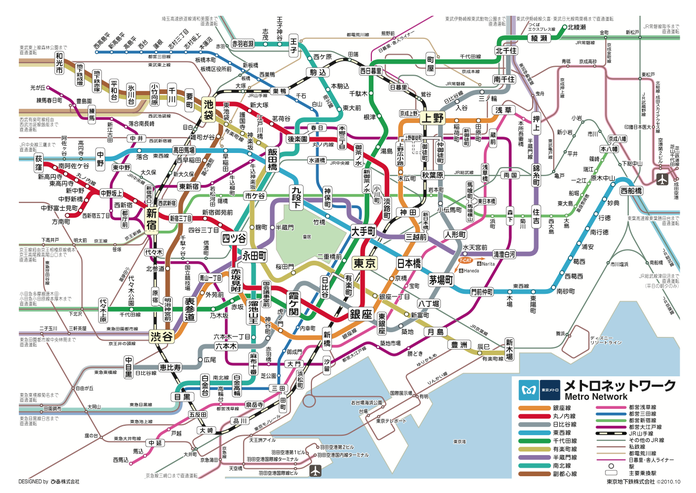Article
ESPI on site: 麥倉聖子 縦? 横?

We proudly present our first Japanese blog post! An English version is also available.
 Foto: Toshiya Izumo
Foto: Toshiya Izumo
彼女はまず,なぜヨーロッパへ来ることを決意したのか,そのきっかけを語ることから始めた。それは,彼女が学生時代に見たJan Tschicholdの「Meisterbuch der Schrift」だった。その本から受けたヨーロッパのシンプルで美しいタイポグラフィーの魅力に取り憑かれ,彼女はヨーロッパへ渡ることを決意し現在にいたる。
武蔵野芸術大学でヴィジュアルコミュニケーションを学んだ後,University of Readingでブックデザイン課程を卒業。その後デザイナーとして,また,現在はタイポグラファーとしてもTim AhrensとともにJust another Foundryを運営し,世界各国での講演をこなす。
今回の講演では,まずはひらがな,カタカナ,漢字(中国の文字),ラテンアルファベットを使用する日本の文字システムの説明に始まり,日本へ輸入された漢字の過程,漢字の一部から形作られたカタカナ,漢字の草書化,簡易化されたひらがなの起源を紹介,さらには文章の中での漢字の主な使用箇所(名詞,動詞部)や,ひらがな(文法上の補助),カタカナ(外国語,外国の地名等)の使用箇所に始まり,それらの文章中での使用される割合(ひらがな約60%,漢字約20~30%,カタカナ約10%,残りは記号類)にまで話は及ぶ。
また,日本語の文章にはヨーロッパのように単語と単語の間に空間がないことや,以前には,表音文字であるカタカナと単語間のアキを用いて日本語を表記しようと試みた例なども紹介された。
日本語という言葉も文字も,はては文化すらも知ることのない観客のヨーロッパ人(ドイツで開催されているTYPOBerlinではあるが,観客の中には多くのドイツ人以外の観客も混ざっている)にとっては,少々難しいテーマではあろうが,彼女はテンポ良く,軽快に話を進め,さらに本題へと続く。
今回の講演での主題は,日本語の縦書きと横書き表記の説明にある。なぜ日本では縦書きと横書きがあるのかを歴史的資料と共に、どのような場合縦書きになり,どのような場合横書きになるのか。また縦書きと横書きが混在する例なども、豊富な資料とともに紹介された。
1. 縦書きは主に,伝統的なもの,古きよきものが求められるとき,(小説、教科書、書道、寿司屋のメニュー等)また,文字を配置するスペースが限られている場合(日本酒のラベルや本の背表紙等狭いスペースに文字を配置する場合)その書き方向が縦のほうが都合が良いときに使用される。
2. 横書きは,主に辞書などでラテンアルファベットが多く混ざる場合,数学書,パブリックサイン,Webサイトなどに使用される。
3. 縦・横混在は,インフォメーションデザイン,新聞,雑誌,看板などに使用される。

さらに話は他の漢字圏であるアジアの現状などにも及ぶ。
台湾や香港では日本と同じように縦・横書き可能。
中国,北朝鮮では,今日ではほぼ横書きのみに統一されている。
韓国では,90年代後半まで縦書きの新聞もあったが,今日ではほぼ横書きのみに統一されている。
また,最後には16世紀から19世紀あたりまでの,日本人がラテンアルファベットと日本語を併記するために,試行錯誤して行われた(日本語を数文字の縦書き・アルファベットを横書き,日本語縦書きを反時計回り90度回転・アルファベット横書き,日本語縦書き・アルファベットを反時計回り90度回転等)ヨーロッパ人にとっては若干冗談とも思えるような例を提示して会場の笑いを誘っていた。
日本人にとっては普段まったく気にする事のない縦書きと横書きであるが,ヨーロッパの人々にとっては両方使用してよいということが不思議なようである。しかしながら,ヨーロッパで街を歩けば実際には縦書きの看板を見る事があるのだが,これはかつて日本人が一行につき一文字だけの縦書きが横書きに見えたように,一行につき一文字だけの横書きが縦書きの看板にあたるのだろう。
もしかしたら,ヨーロッパでも100年後には縦書きも今より多く見つけられるかもしれない。今は冗談に聞こえるかもしれないけれど。
最後に,講演後に快くこのBlogへの掲載を許可し,フレンドリーに接してくださった麥倉さんにありがとう!(彼女は会場で日本語で「ありがとう」と言ってこの講演を終了した。)
 Foto: Toshiya Izumo
Foto: Toshiya Izumo
Espi on site: Shoko Mugikura – Vertical? Horizontal?
Mugikura started her talk with an introduction of why she came to Europe. When she was a student in Japan she read Jan Tschichold’s “Meisterbuch der Schrift”. As she read the book she was enslaved by the beauty and simplicity of european typography and decided to come to Europe – now she lives and works in Berlin.
She studied Visual Communication Design in her native country Japan at Musashino Art University, then gaining an MA in Book Design from the University of Reading (UK). She has been working as a typo/graphic designer since 2005 and she joined Just Another Foundry in 2010, working together with Tim Ahrens. She has spoken about multi-script typography in many countries.
Mugikura introduced the japanese script system, which is composed of hiragana (a cursive script of chinese characters), katakana (some parts of chinese characters), kanji (chinese characters) and the latin alphabet. She explained how each script is used in text: kanji is used in a text for part of nouns and verbs, hiragana is used for grammatical supplements, katakana is used for foreign words and names of foreign places. How often each was used in a text was also explained: about 60 percent of text is composed of hiragana, 20–30 percent of text is composed of kanji and 10 percent of text is composed of katakana, the remainder is filled out by punctuation and symbols.
She explained the reasoning for no word spacing of japanese text is the mixing of different scripts clearly shows the reader the words end. In the past changing the script system to something using only katakana (phonetical characters) and word spacing was attempted but this writing system was not widely adopted. Such subjects are perhaps a little difficult for European people to understand, because they don’t know about Japanese language, scripts and culture, but Mugikura showed many examples and talked with a quick tempo making it fun and interesting.
The main topic of the talk was vertical writing and horizontal writing. she explained with many historical examples why there are both writing systems in japan and how it works.
– Vertical writing is used for traditional or classical things (eg. novels, school books, calligraphy, menu boards in sushi restaurant “if you find horizontal menu boards in a sushi restaurant, the restaurant is not run by Japanese”). Vertical writing is also used when the space is limited (sake ravel, spine of a book etc.)
– Horizontal writing is used when Japanese scripts are mixed with the latin alphabet (eg. dictionary and science reports), mathematical texts, public signs, web sites etc.
– Both writing system are used in a information design, news papers, magazines, neon signs etc.
 These writing systems are also used in other east asian countries.
These writing systems are also used in other east asian countries.
– Both writing systems are using in Taiwan and Hong Kong
– The writing systems of China and North Korea are unified and only use the horizontal writing system
– There was a vertical writing system in South Korea until the late 90s. But today almost of all texts are written horizontally
Finally she showed many old funny examples where Japanese people have constructed vertical Japanese text with horizontal latin alphabet, counter clockwise 90 degree rotated vertical japanese text with horizontal latin alphabet, vertical japanese text with counter clockwise 90 degree rotated horizontal latin alphabet (still used this type of writing system) and so on …
Japanese People don’t care about the writing direction, because it’s so normal for them. From birth, everyday and everywhere they are exposed to both writing directions. Althought vertical text could be sort of weird to European people, you can however find vertical signs in western countries. It is maybe not really vertical text, but a horizontal word with one character per line. The horizontal text in Japan started in a similar way this way – only one character per line. Perhaps we will find vertical text as well as horizontal text after 100 years in western countries too, like you can see in Japan today. Who knows?
At last I want to say “Arigato” to Ms. Mugikura for the opportunity to write on an interesting topic and to meet such a friendly person.
More information about her visit Just another Foundry
Further reading in German: typotalks.com and slanted.de